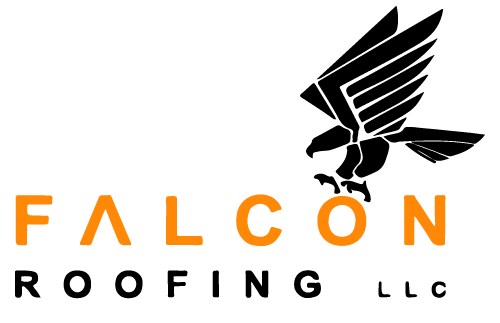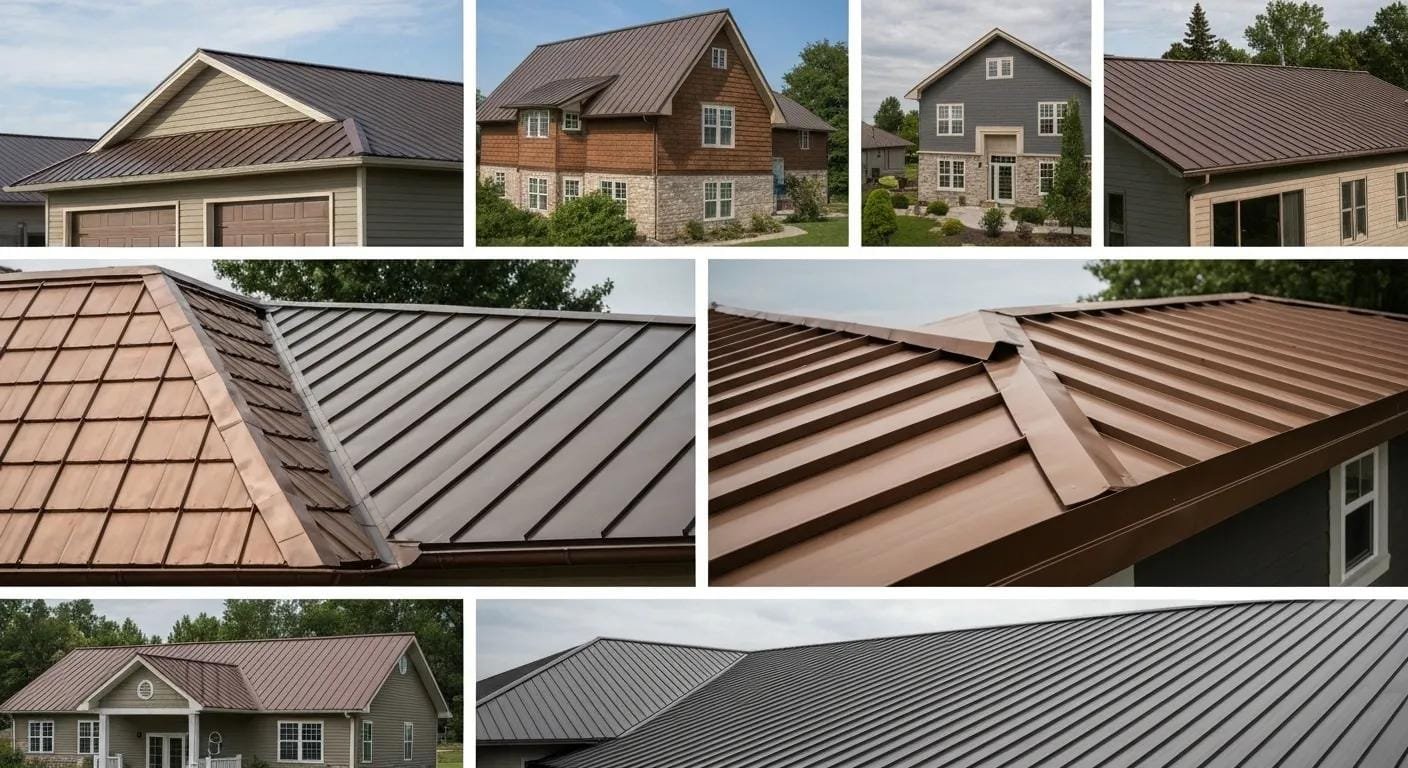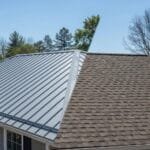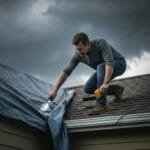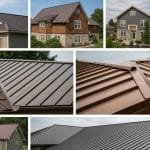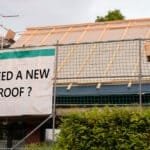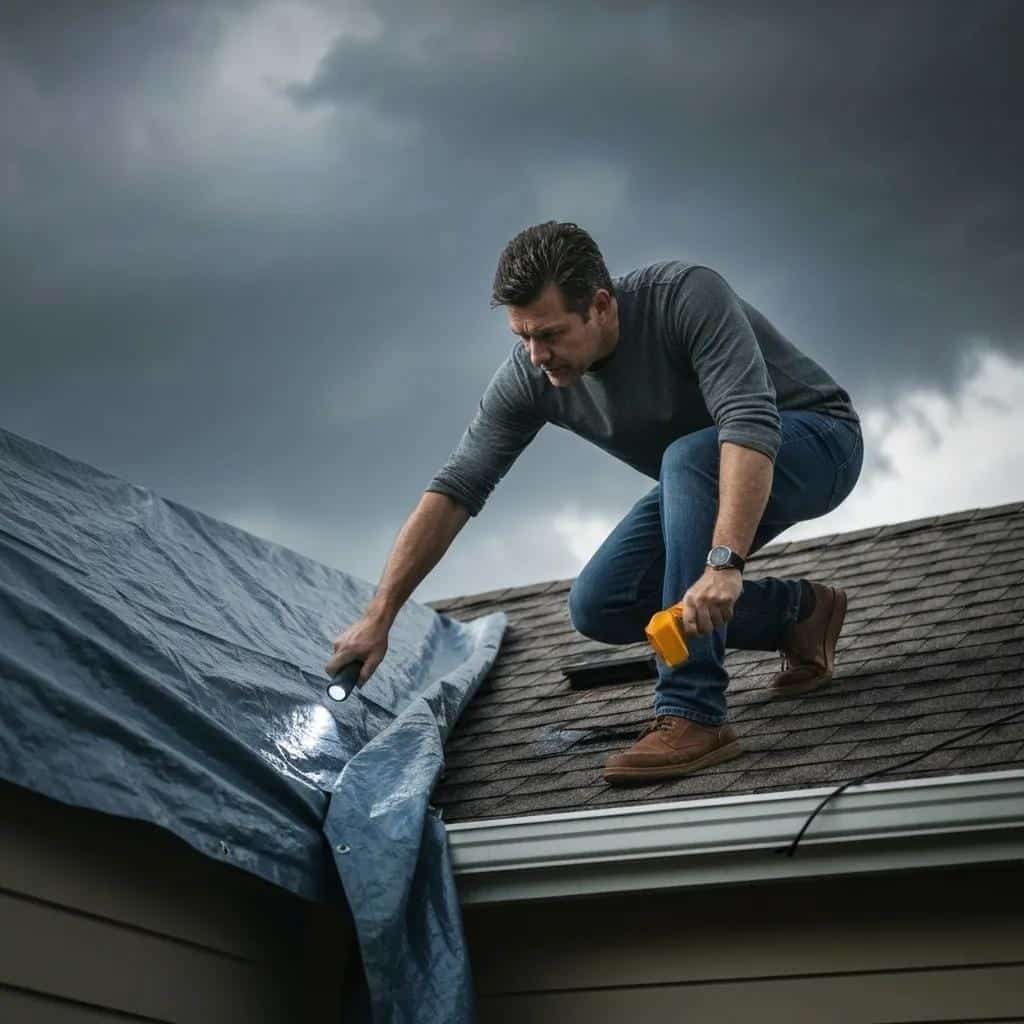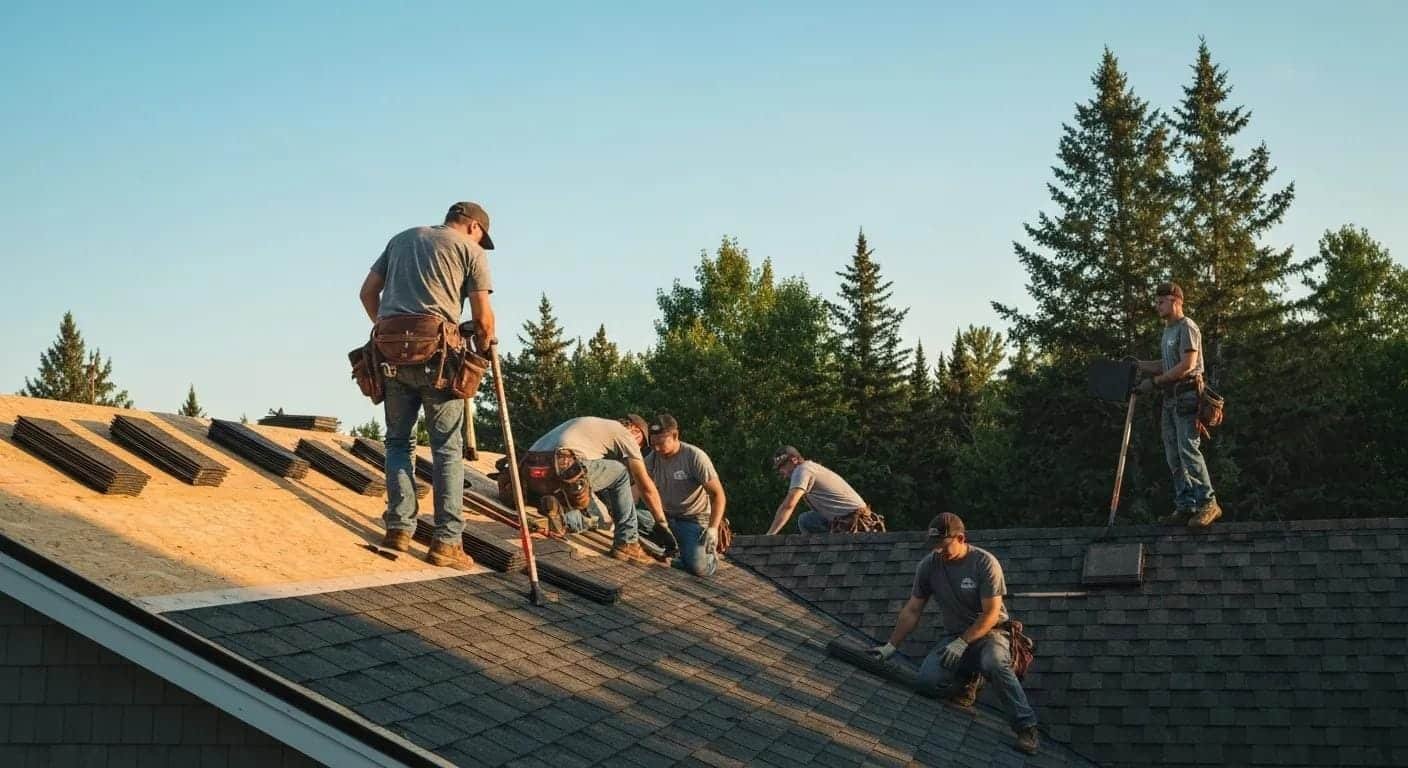Metal Roofing Choices: Finding the Perfect Fit for Your Needs
Selecting the right metal roofing can significantly enhance your property’s lifespan, energy efficiency, and overall curb appeal, all while helping you avoid costly future repairs. In this comprehensive guide, you’ll learn how different metal roofing styles and materials stack up in terms of durability, upkeep, cost, and resistance to the elements. We’ll dive into four popular panel styles—standing seam, corrugated, metal shingles, and specialty coatings—and compare leading metal roofing materials like steel, aluminum, copper, and zinc. Throughout this guide, you’ll gain insights into the best options for your home or business, understand the balance between initial investment and long-term value, and see how Falcon Roofing’s expert team ensures a perfect installation every time.
What Are the Top Metal Roofing Options for Homes and Businesses?
Metal roofing offers a range of panel profiles that bring strength, energy savings, and visual appeal to both residential and commercial properties. Below, we break down each style, explain how it works, and highlight its key advantages for performance and design.
What is Standing Seam Metal Roofing and Why Should You Choose It?
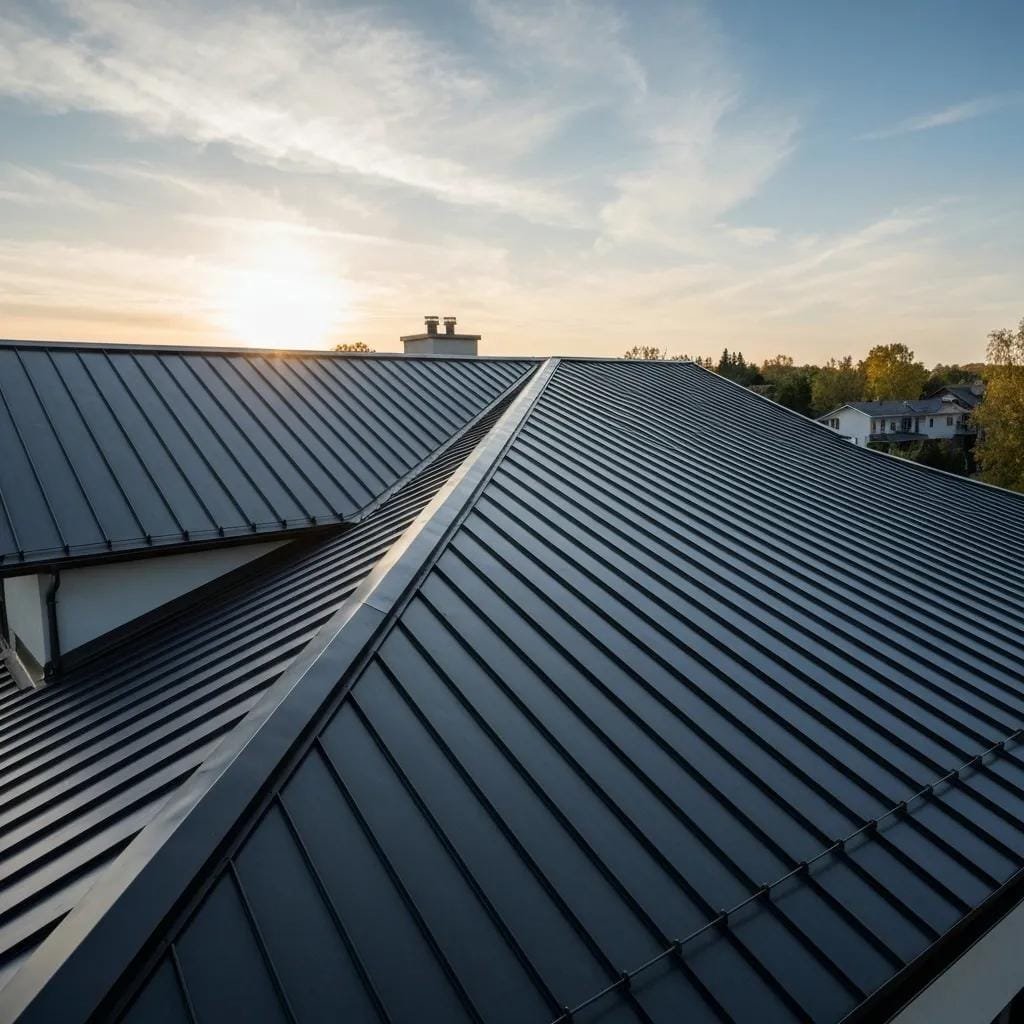
Standing seam metal roofing features vertical panels connected by raised seams that cleverly hide fasteners, creating a watertight seal and a clean, contemporary look. This design promotes efficient water runoff and provides excellent resistance to wind uplift due to its interlocking nature.
- Concealed fasteners eliminate potential leak points and minimize maintenance needs.
- The raised seams effectively channel rain and snow away from the roof quickly.
- Smooth panel surfaces are ideal for reflective coatings, boosting energy efficiency.
American Way Exteriors, 12 Benefits of a Standing Seam Metal Roof, (2020)
The Advantages of Standing Seam Metal Roofing
Standing seam metal roofs are built to last, often enduring for 40 to 70 years. The hidden fastener system is a primary reason why standing seam requires less upkeep compared to other types of metal roofing panels.
With these benefits in mind, let’s explore more budget-friendly options like corrugated metal, which offer a great balance of cost and durability.
How Does Corrugated Metal Roofing Measure Up for Residential and Commercial Use?
Corrugated metal roofing is made from steel or aluminum sheets formed into a pattern of alternating ridges and valleys. This ribbed design provides significant structural strength for its weight, making it a practical choice for agricultural buildings, warehouses, and homes with a rustic aesthetic.
| Profile Type | Structural Strength | Common Applications |
|---|---|---|
| Corrugated Steel | High | Farms, industrial buildings |
| Corrugated Aluminum | Moderate | Homes near the coast, sheds |
| Galvalume Steel | Very High | Commercial properties |
The affordability and straightforward installation of corrugated roofing make it an excellent starting point before considering the more refined look of metal shingle roofing.
What Are the Benefits of Metal Shingle Roofing?
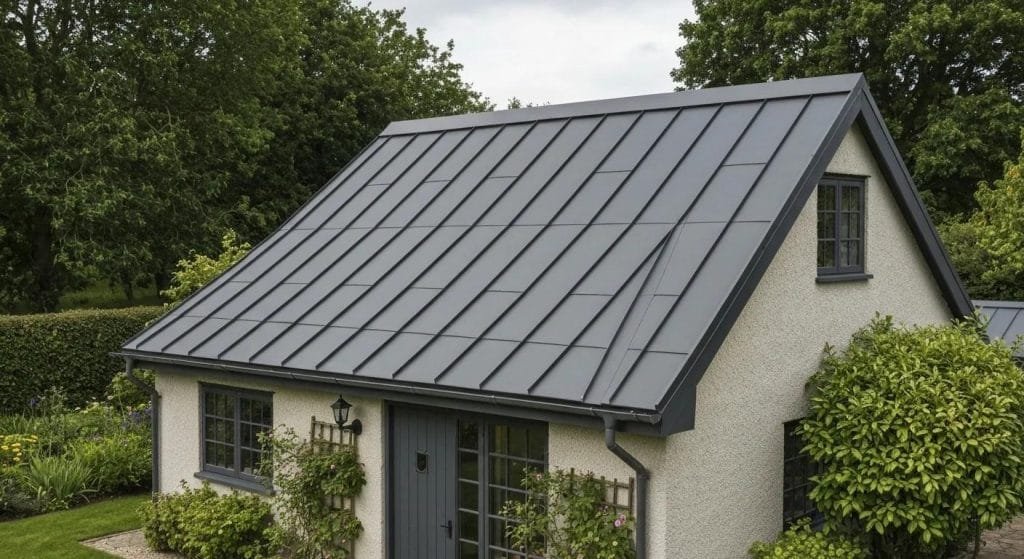
Metal shingle roofing is designed to replicate the appearance of traditional asphalt shingles, wood shakes, or slate, using stamped metal panels. These systems often incorporate advanced coating technologies to ensure lasting color, superior corrosion resistance, and a timeless look.
- Offers a traditional look with the durability of a metal base.
- Interlocking panels effectively prevent water intrusion and reduce noise.
- Its lightweight construction can reduce the structural load on older buildings.
Now that we’ve looked at shingle styles, let’s compare the base metals themselves—steel, aluminum, copper, and zinc—to help you find the material that best suits your climate and budget.
Which Metal Roofing Materials Are Most Popular: Steel, Aluminum, Copper, and Zinc?
The choice of metal alloy significantly impacts corrosion resistance, weight, and the expected lifespan of your roof. The table below provides a quantitative comparison of key materials.
| Material | Corrosion Resistance | Weight per Square Foot | Estimated Lifespan |
|---|---|---|---|
| Steel | Moderate (with galvanization or Galvalume coating) | 1.2 lbs | 40–70 years |
| Aluminum | High (forms a natural protective oxide layer) | 0.5 lbs | 30–50 years |
| Copper | Exceptional (develops a protective patina) | 1.1 lbs | 70–100+ years |
| Zinc | Very High (features a self-healing surface) | 0.7 lbs | 80–100+ years |
Corrosion resistance varies by alloy: galvanized steel is coated with zinc for rust protection, Galvalume steel adds aluminum to the zinc coating for enhanced defense, aluminum naturally develops a stable oxide layer, and copper forms a protective patina over time when exposed to the elements.
Mid-Michigan Metal Sales, Do Metal Roofs Rust? A Complete Reference Guide, (2023)
Understanding the Corrosion Resistance of Steel Roofing
Galvanized steel is protected from corrosion by a zinc coating, while Galvalume steel features a zinc coating enhanced with aluminum for superior corrosion resistance. Aluminum itself does not rust, and copper develops a protective layer through exposure to oxygen.
With a clear understanding of material properties, we can now assess how they perform under challenging conditions and what kind of maintenance each requires.
Exploring Metal Roofing Durability, Lifespan, and Weather Resistance
The inherent strength of metal roofing lies in its exceptional longevity and tolerance to various weather conditions. Knowing which materials and coatings offer the longest service life is crucial for homeowners and insurance providers when assessing property risks.
Which Metal Roofs Offer the Longest Lifespan and Best Durability?
Copper and zinc roofing systems stand out for their extended lifespans, largely due to their self-healing patinas. Coated steel provides a compelling balance of cost-effectiveness and robust strength.
- Copper roofs are known to last well over 100 years.
- Zinc develops a protective oxide layer that effectively seals minor scratches.
- Galvalume steel offers superior rust prevention through its combined aluminum and zinc coatings.
State Farm, Pros and cons of metal roofs for your home, (2024)
Metal Roof Lifespan and Durability Compared
Metal roofs, depending on the material used, can last anywhere from 40 to 80 years, significantly outperforming the typical 20-year lifespan of asphalt shingle roofs. Copper and zinc roofing systems often lead in longevity due to their unique self-healing patinas.
These durable materials naturally lead us into evaluating their performance against common weather threats like hail, wind, and fire.
How Resistant Are Metal Roofs to Hail, Wind, and Fire?
Metal roofs inherently offer excellent resistance to fire and wind, with specific coatings and panel designs further enhancing their impact performance:
- Class A fire ratings provide superior protection against flame spread.
- Standing seam panels can withstand winds exceeding 140 mph thanks to their concealed fastening system.
- Steel and aluminum are resistant to hail dents, especially when installed with impact-resistant underlayment.
The weatherproofing capabilities of your chosen material directly influence the maintenance requirements for different panel styles.
What Maintenance Is Required for Different Metal Roofing Types?
Regular maintenance is key to preserving your roof’s performance and ensuring warranty compliance. This includes clearing debris, checking fasteners, and inspecting coatings.
- Keep gutters and downspouts clear to prevent water from backing up.
- Conduct annual inspections of seams and flashing to ensure sealant integrity.
- Address any scratches on coated surfaces promptly by touching up exposed bare metal.
Consistent upkeep is essential for extending the life of any metal roof, and it prepares us to compare costs against traditional shingle systems.
What Are the Cost Differences Among Metal Roofing Options?
While the initial investment for metal roofing typically ranges from moderate to premium, its extended lifespan and energy-saving benefits often make up for the higher upfront costs over time.
How Does The Cost of Metal Roofing Cost Compare to Traditional Shingles?
Metal roofing generally costs between $7–$29 per square foot for installation, whereas asphalt shingles typically range from $3–$9 per square foot. Despite the higher initial expense, the 40–70-year lifespan and reflective properties of metal roofing lead to significant savings on replacements and energy bills over the years.
Renova Roofing, Metal Roof Vs. Shingles Cost: Which Is More Affordable?, (2024)
Metal Roof vs. Shingles Cost Comparison
Metal roofing typically installs for $7–$29 per square foot, compared to $3–$9 for asphalt shingles. Despite the higher upfront expense, metal’s 40–70-year lifespan and reflective properties reduce replacement and energy costs over time.
These figures provide a solid basis for examining material-specific pricing.
What Are Typical Price Ranges for Steel, Aluminum, Copper, and Zinc Roofs?
| Material | Installed Cost per Square Foot | Expected Service Life |
|---|---|---|
| Steel | $7–$12 | 40–70 years |
| Aluminum | $9–$14 | 30–50 years |
| Copper | $25–$40 | 70–100+ years |
| Zinc | $20–$30 | 80–100+ years |
Comparing costs against longevity helps decision-makers identify the best long-term value, especially when factoring in energy performance benefits.
How Does Energy Efficiency Impact Long-Term Savings on Metal Roofs?
Reflective coatings can slash cooling expenses by up to 40 percent in warmer climates, while insulated metal panels offer enhanced thermal resistance, further boosting savings and reducing the strain on your HVAC system.
Understanding these potential savings completes our cost analysis and sets the stage for weighing the pros and cons.
What Are the Pros and Cons of Metal Roofing Materials and Styles?
Metal roofing presents a compelling array of benefits, alongside a few potential drawbacks that are worth considering before installation.
What Are the Benefits of Choosing Metal Roofing?
- Exceptional longevity means fewer roof replacements over time.
- High reflectivity helps lower energy consumption and cooling costs.
- Lightweight panels often eliminate the need for structural reinforcement.
- A wide selection of colors and profiles enhances your property’s curb appeal.
These advantages are driving increased demand among homeowners and commercial developers seeking durable, efficient, and attractive roofing solutions.
What Are the Common Drawbacks or Limitations of Metal Roofs?
- The initial investment is typically higher than for asphalt shingles.
- Installation requires specialized skills and experienced contractors.
- Without proper insulation, rain noise can be a concern.
- Periodic touch-ups for coatings may be needed in harsh environments.
Balancing these benefits and drawbacks is key to selecting the ideal roofing system for your specific property and climate.
How to Decide Which Metal Roof Type Suits Your Property and Climate?
Align your priorities—such as budget, desired lifespan, and aesthetic preferences—with material characteristics and regional weather patterns by following these three steps:
- Assess your climate’s challenges (e.g., high winds, hail, coastal salt spray).
- Prioritize the material attributes that matter most to you (e.g., corrosion resistance, weight).
- Evaluate the performance of different styles (e.g., standing seam for superior weatherproofing, shingles for a classic look).
A clear decision-making framework ensures your new roof effectively meets both your functional requirements and your design aspirations.
What Commercial Metal Roofing Options Are Available and Which Suit Your Business Needs?
Commercial properties often require large-scale durability, significant energy efficiency, and straightforward maintenance, which guides the selection of appropriate materials and profiles.
What Metal Roofing Styles Are Best for Commercial Buildings?
Standing seam, R-panel, and exposed-fastener corrugated systems are commonly chosen for commercial projects due to their efficient drainage capabilities and strong wind resistance ratings.
- R-panels offer cost-effective coverage with their through-fastened designs.
- Standing seam systems provide maximum weather resistance, especially for low-slope roofs.
- Corrugated panels are ideal for long-span installations, requiring minimal underlying support.
The choice of style also influences how commercial roofs contribute to overall efficiency and resilience.
How Do Commercial Metal Roofs Address Energy Efficiency and Durability?
Reflective coatings on commercial metal roofs can qualify for energy rebates, while insulated metal panels combine structural support with thermal performance in a single component, leading to reduced utility costs and extended roof life.
These dual benefits are important considerations for businesses when evaluating their investment.
What Should Businesses Consider When Choosing Metal Roofing?
Evaluate the return on investment by considering warranty duration, ongoing maintenance needs, and potential insurance savings resulting from improved fire and wind ratings. Securing a robust workmanship warranty and reliable inspection services will ensure long-term protection and predictable operational expenses.
A strategic approach to selecting commercial roofing completes our overview of metal roofing options suitable for every requirement.
Metal roofing delivers unparalleled longevity, energy efficiency, and design flexibility for both homes and businesses. By carefully comparing different profiles and materials—including steel, aluminum, copper, and zinc—you can align performance characteristics with your budget and climate demands. With two decades of installation experience and a commitment to quality craftsmanship, Falcon Roofing guarantees that your chosen metal roofing system will perform flawlessly for decades to come. Contact Falcon Roofing today to schedule a complimentary consultation and discover the ideal metal roofing solution for your property.
